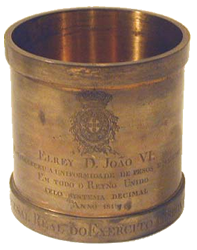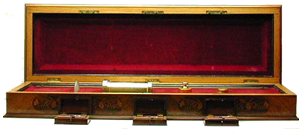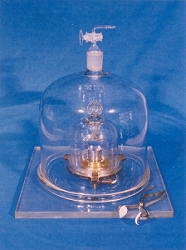
THE DECIMAL METRIC SYSTEM
At the end of the 18th century many disconnected and inconsistent measurement systems existed in Europe, which did not favor trade. Efforts started to find more rational systems and, if possible, with some uniformity that would allow their use by different countries.
With the French Revolution, these efforts were developed and, after several proposals, in 1791, the Assemblée Nationale Constituante (National Constituent Assembly) decreed that the length of the Earth’s meridian quarter, a unit of natural and invariable measure, would be used for the base of the new measurement system, of decimal basis, which came to be called mètre.
The volume unit was obtained, using a container in the shape of a cube and edges with the length of one tenth of a meter (a cubic decimeter), which came to be called liter and the unit of kilogramme mass was obtained, filling this same container of distilled water, at 5 degrees celsius.
At the beginning of the 19th century, in Portugal the systems derived from the reforms of King Manuel I and King Sebastião continued to be used, making it impossible to guarantee a reliable metrological control.
It was only in 1852 that the Metric System was definitively adopted in Portugal, by Decree of Queen Maria II.

In 1812 the Prince Regent Dom João (future King João VI) appointed a Comissão para o Exame dos Forais e Melhoramentos da Agricultura (Commission for the Examination of Forals and Improvements in Agriculture), which recommended the reform of the system of weights and measures. The work, done in collaboration with the Academia das Ciências (Royal Academy of Sciences), resulted in the proposal of a system based on the French mètre, but with Portuguese terminology.
Thus, in Portugal, the designation for the mètre was vara, the unit being 1/10 of the vara with the name of mão travessa. The liter would be called canada and the kilogramme would have the designation of libra (pound).
However, this system, of which 300 copies were made to distribute throughout the country, was never used, due to the constant turmoil resulting from the Liberal Revolution, Liberal Wars and popular revolts that characterized the first half of the 19th century.

The gradual adoption of the system implied the creation of new organisms and a metrological traceability chain. Thus, the Inspecção Geral dos Pesos e Medidas do Reino (General Inspection of Weights and Measures of the Kingdom) was created, which stayed with the standards of 1st class. The 2nd class would be sent to the District’s Weights and Measures Inspections and the 3rd class would stay with the city councils.
Despite several setbacks, the “new” system became to be gradually used.

As several countries were already using this system, it became necessary to ensure uniform measures. In 1869, the French government invited numerous countries to participate in an “International Metro Convention”.
17 countries participated, including Portugal.
The Metro Convention created the various bodies responsible for managing metrology at the international level that still exist (BIPM, CGPM and CIPM) and oversee metrology at international level.